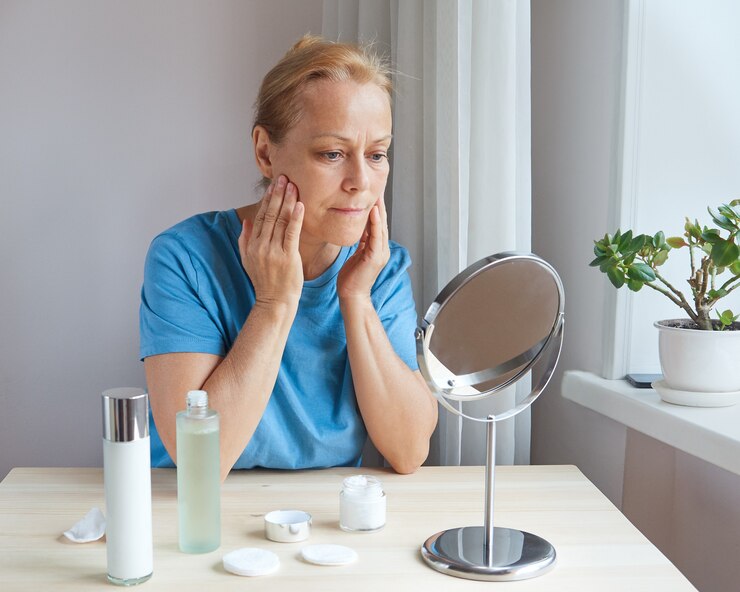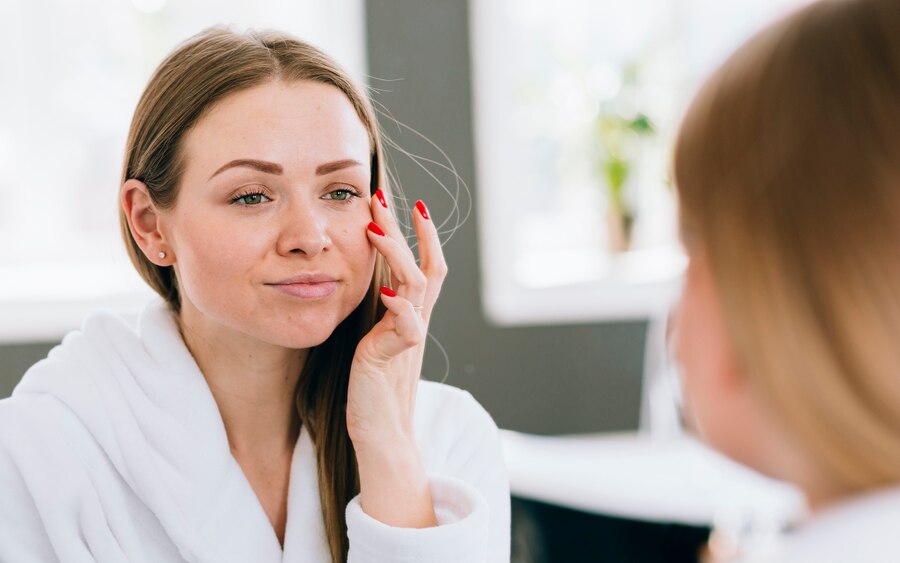When it comes to fighting acne, having trustworthy allies is crucial. Among the many treatments available, benzoyl peroxide stands out as a stalwart warrior, offering potent solutions for banishing blemishes and reclaiming clear, healthy skin. This guide explores the science behind benzoyl peroxide, offers practical tips, and addresses common concerns about its various applications.
The Science Behind Benzoyl Peroxide
Benzoyl Peroxide: A Mechanism of Action
At the heart of benzoyl peroxide’s efficacy lies its unique mechanism of action. Upon application, benzoyl peroxide penetrates the skin and releases oxygen, creating an oxygen-rich environment inhospitable to the acne-causing bacterium Propionibacterium acnes. This dual action of oxygenation and antimicrobial activity effectively targets and eliminates acne at its source, making benzoyl peroxide an indispensable tool in the fight against breakouts.
The Antimicrobial Arsenal
Propionibacterium acnes thrives in the sebaceous follicles of the skincare, where it proliferates and contributes to the development of acne lesions. By disrupting the bacterial environment and inhibiting bacterial growth, benzoyl peroxide effectively reduces the population of P. acnes, helping to alleviate inflammation and prevent new breakouts from forming.
Banishing Blemishes: Benzoyl Peroxide’s Role in Acne Treatment
Benzoyl peroxide has antimicrobial properties, helps unclog pores, and prevents new black and whiteheads from forming by reducing excessive oil and sebum production. By promoting the shedding of dead skin cells and preventing the accumulation of debris within the pores, benzoyl peroxide addresses one of the underlying factors contributing to acne formation, resulting in clearer, smoother skin over time.
Choosing the Right Benzoyl Peroxide Product
- Percentage Matters: Benzoyl peroxide is available in various strengths, typically 2.5% to 10%. While higher concentrations may seem more potent, studies have shown that lower concentrations, such as 2.5% or 5%, are equally effective with fewer side effects, making them a preferred choice for many individuals.
- Gel vs. Cream: Benzoyl peroxide formulations come in different vehicles, including gels, creams, and lotions. Gels are often preferred for oily or acne-prone skin due to their lightweight texture and quick absorption, while creams provide added hydration and may be more suitable for dry or sensitive skin types.
- Navigating Combination Therapy: For stubborn or severe acne, combining benzoyl peroxide with other acne-fighting ingredients, such as salicylic acid or retinoids, can enhance efficacy and accelerate results. However, it’s essential to introduce new products gradually and monitor for any signs of irritation or adverse reactions.
MH & B skincare’s benzoyl peroxide cream is a great product to help you achieve healthier and happier skin. This cream fights acne and blemishes, empowers you with skin knowledge, and gives excellent results. Try it now!
Addressing Concerns and Misconceptions
- Tackling Dryness and Irritation: One of the most common side effects of benzoyl peroxide is dryness and irritation, especially during the initial stages of treatment. To minimize discomfort, start with a lower concentration, gradually increase the frequency of use, and incorporate hydrating products, such as moisturizers and gentle cleansers, into your skincare routine.
- The Myth of Antibiotic Resistance: Contrary to popular belief, benzoyl peroxide does not contribute to antibiotic resistance. Unlike antibiotics, which target specific bacterial strains and can lead to resistance over time, benzoyl peroxide works through a non-specific mechanism, making it an effective long-term treatment option without the risk of resistance development.
- Long-Term Use: While benzoyl peroxide is safe for long-term use, it must be used consistently and as directed to maintain results. Additionally, periodic breaks or alternating with other acne treatments can help prevent tolerance and maintain efficacy over time.
To learn about effective acne treatments, read our blog post “What are the Best Treatments for Acne and Scarring?“
Benzoyl Peroxide: A Versatile Player Beyond Acne
- Managing Acne Scars: In addition to treating active acne lesions, benzoyl peroxide can also help prevent the formation of acne scars by promoting faster healing and reducing inflammation. By incorporating benzoyl peroxide into your skincare routine early on, you can minimize the risk of post-inflammatory hyperpigmentation and scarring.
- Preventive Measures: Once acne is under control, benzoyl peroxide can be used preventively to maintain clear skin and prevent future breakouts. Regular use as part of a comprehensive skincare regimen can help keep pores clear, reduce the frequency of breakouts, and promote overall skin health.
- Exploring Other Dermatological Uses: In addition to its role in acne management, benzoyl peroxide has been utilized in treating various dermatological conditions, including folliculitis and seborrheic dermatitis, and even as an adjunct therapy for certain types of rosacea. Its broad-spectrum antimicrobial activity and comedolytic properties make it a versatile treatment option for various skin concerns.
Tips for Effective Benzoyl Peroxide Application

- Start Slowly: Start with a lower frequency of benzoyl peroxide application to acclimate your skin. Once daily, then increase to twice daily.
- Cleanse Thoroughly: Cleanse skin with a gentle cleanser before applying benzoyl peroxide. Pat skin dry before application.
- Use a Pea-Sized Amount: To effectively use benzoyl peroxide, apply a pea-sized amount to affected areas. Over-application can cause irritation and dryness.
- Avoid Eye Area and Mucous Membranes: Benzoyl peroxide can irritate sensitive areas like eyes and mucous membranes. Apply with caution to avoid contact with these areas.
- Gently Massage into Skin: Gently massage benzoyl peroxide into your skin using circular motions until absorbed. Avoid excessive rubbing to prevent irritation.
- Allow Absorption Time: Let benzoyl peroxide absorb fully into your skin before applying other products to maximize efficacy and minimize interactions.
- Follow with Moisturizer: Apply a non-comedogenic moisturizer after benzoyl peroxide to avoid excessive dryness. Use “oil-free” or “non-comedogenic” moisturizers to prevent clogging pores.
- Protect from Sun Exposure: Benzoyl peroxide raises photosensitivity. Wear SPF 30+ sunscreen daily, even on cloudy days, and reapply every 2 hours in direct sunlight.
- Be Consistent: Use benzoyl peroxide consistently as your healthcare provider directs for the best results in treating acne.
- Monitor for Irritation: Monitor your skin’s reaction to benzoyl peroxide. Reduce frequency or switch to lower concentration if excessive dryness, redness, or irritation occurs.
Conclusion
In acne treatment, benzoyl peroxide is a time-tested ally for clear, radiant skin. By understanding its mechanism of action, choosing the right product, addressing concerns, and incorporating it into a comprehensive skincare routine, you can harness the power of benzoyl peroxide to banish blemishes and achieve lasting results.
At M Health and Beauty, we understand that acne can be a frustrating problem. That’s why we offer expert advice and a range of services to help treat acne. Our team of professionals is dedicated to providing personalized care and practical solutions to help you achieve clear and healthy skin. So, if you’re struggling with acne, visit M Health and Beauty today and let us help you find the proper treatment for your skin.


